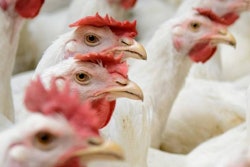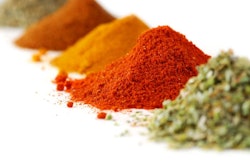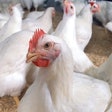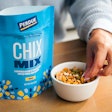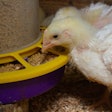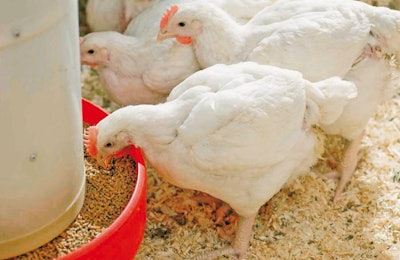
Gut health has a significant effect on broiler performance and, where poultry nutrition is concerned, there are several steps poultry producers can follow to help ensure flocks remain healthy and free from enteric disorders.
Well-being, health and bird performance are all closely related to the proper functioning of the intestinal tract, and as the industry faces continued pressure to reduce antimicrobial use, understanding and modulating poultry’s digestive microflora is increasingly important.
Favoring beneficial bacteria
To ensure that poultry grow and gain weight healthily, what is happening in the birds' gut at a bacterial level needs to be understood.
The gastrointestinal tract is populated by more than 400 different bacterial species, which live in distinct sections of the tract. For instance, bacteria such as Lactobacillus, Enterococcus and Streptococcus dominate the upper tract from crop to small intestine. In the hindgut (ceca), however, 68 percent of the microbiota is represented by the genus Clostridacea.
Gut bacteria ferment simple carbohydrates and produce volatile fatty acids such as acetic, butyric and propionic acid. These acids serve as an energy source for epithelial cells, promoting digestion, and nutrient absorption. To ensure that a bird's digestive tract functions and develops properly, it is essential to maintain the correct balance of microbial populations in the gut. Once achieved, birds can feed, grow and develop healthily.
Combat disease through gut balance
Worldwide, up to 90 percent of commercial poultry experience enteric diseases each year. While antibiotics have traditionally been the standard method for prevention and treatment of enteritis, they are now being increasingly abandoned as concerns over antibiotic resistance grow.
In their place, a growing number of alternative additives is becoming increasingly available that can help to modulate gut health. These alternative additives include probiotics, prebiotics, organic acids, phytogenics and symbiotics.
These feed additives help promote the growth of beneficial bacteria, which in turn help broilers maintain a healthy gut.
Probiotics, for example, can be highly effective in modulating gut microbiota for two main reasons: they produce metabolites, and suppress pathogenic bacteria.
However, it is important to remember that different probiotics work in different ways, and it pays to select probiotics that have a proven mode of action. It is also important that the probiotic is able to survive in the harsh conditions of the upper gastrointestinal tract.
Diets make all the difference
To make sure poultry nutrition is well balanced, it is worth considering the effects different types of feed have on the bacteria in a bird's gut.
Studies have shown that corn- and sorghum-based diets promote the growth of Enterococcus bacteria. The research also shows diets based on barley, oats and rye, however, increase the population of Lactobacillus, Escherichia, Lactococcus and Streptococcus. Ingredients such as wheat, barley and oats have further negative effects. They can increase the viscosity of digesta and consequently its retention time. This stimulates the overgrowth of bacteria, further reducing the digestibility of nutrients and creating a negative cycle.

A poorly balanced diet can lead to the overgrowth of harmful bacteria resulting in enteric disorder and reducing performance. | Lonely11, Dreamstime.com
The role of protein levels
The amount of protein in feed also needs to be carefully considered. Although proteins are essential for any developing organism, an intake of protein that is too high will do far more harm than good.
Providing that a bird digests protein in the small intestine, the protein will play its part in helping the bird stay agile and healthy.
However, if protein in the small intestine is not digested and starts to ferment, it may produce various toxic substances such as indoles, phenols, ammonia, amines and amides. These substances stimulate the growth of harmful bacteria, such as Clostridium perfringens. Not only are these bacteria frequently associated with enteric disorders, they are also known as major cause of necrotic enteritis.
A well-balanced diet provides a bird with the exact amount of protein it is able to digest. What is also important, however, is to remember that an optimal diet is not simply about the quantity of proteins consumed; the source and quality of the dietary protein can also make a difference. For example, high levels of fish meal in a bird's diet cause a significant increase in Clostridium perfringens, which in turn increases a bird's chance of developing necrotic enteritis.
Keeping poultry healthy, agile, well developed and disease free is a complex and multi-factorial task, but it is worth remembering that financial losses globally due to enteric disorders are thought to cost producers $6 billion annually.
Gut health additives: four possible future scenarios
www.WATTAgNet.com/articles/29580
Comprehensive resource for antibiotic-free poultry production available
A new collection of exclusive articles, blogs, infographics and videos on antibiotic-free poultry production, by trusted WATT Global Media editors and industry experts, equip poultry producers and marketers with information to help them make critical business decisions. Purchase your copy.
